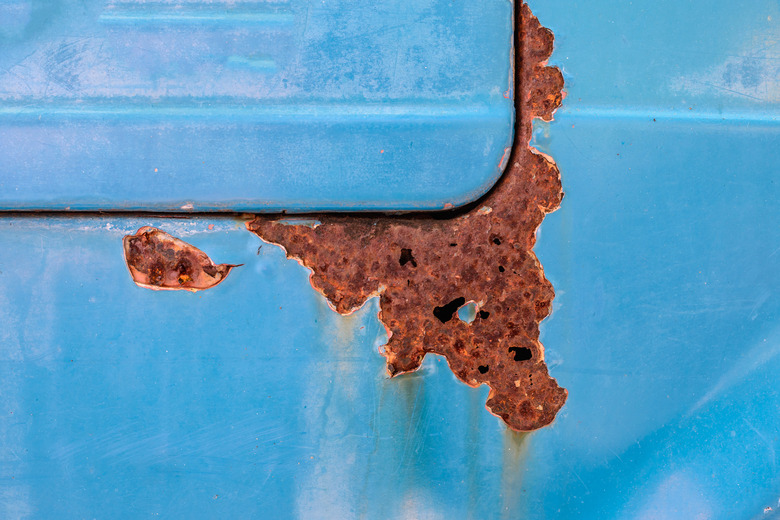How Are Oxidation-Reduction Reactions Used In Everyday Life?
An oxidation-reduction reaction, or redox reaction, is a chemical reaction in which one or more electrons are transferred from one molecule or compound to another. The species that loses electrons is oxidized and usually a reducing agent; the species that gains electrons is reduced and is usually the oxidizing agent. Everyday redox reactions include photosynthesis, respiration, combustion and corrosion.
TL;DR (Too Long; Didn't Read)
Oxidation and reduction (or redox) reactions happen in our cells during cellular respiration, in plants during photosynthesis, and during combustion and corrosion reactions.
Photosynthesis in Plants
Photosynthesis in Plants
In photosynthesis, which takes place in the green leaves of plants, carbon dioxide and water combine under the influence of light to form molecular oxygen and the carbohydrate glucose. The plant uses the glucose as fuel for its metabolic processes. In the first step, light energy is used to liberate the hydrogen atoms, reducing them and creating oxygen gas; these atoms then reduce the carbon in the carbon dioxide. This can be expressed roughly as carbon dioxide + water + light energy → carbohydrate + oxygen + water. The overall, balanced reaction for photosynthesis is usually written 6 CO2 + 6 H2O –> C6H12O6 + 6 O2.
Respiration
Respiration
Cellular respiration allows organisms to liberate the energy stored in the chemical bonds of glucose; think of it as the absolute endpoint in getting fuel from food. The balanced redox reaction is:
C6H12O6 + 6 O2 –> 6 CO2 + 6 H2O + 36 ATP
Where ATP is adenosine triphosphate, a simple energy-supplying compound that drives various other metabolic processes. In this reaction, glucose is oxidized and oxygen is reduced. Loosely speaking, whenever you see that a compound has lost hydrogen atoms, it's been oxidized and when it's gained them it's been reduced.
Combustion
Combustion
Perhaps you think of burning, or combustion, as more of a physical process than a chemical one. Nevertheless, the combustion of, say, the hydrocarbons in fossil fuels, as well as the burning of organic material in wood represent quintessential redox reactions. In each case, the carbon in the compound being burned bonds with oxygen atoms in the air, while some oxygen bonds to the hydrogen in the compound; therefore, the compound being burned is oxidized and the oxygen is reduced, with carbon dioxide and water vapor emitted as combustion products.
Corrosion
Corrosion
When water comes into contact with, for example, an iron pipe, some of the oxygen in the water oxidizes the iron, yielding free hydrogen ions. These ions combine with oxygen in the ambient air to form water, and the process starts again at the oxidation-of-iron step, with the result being increasing amounts of iron in a more-oxidized state — that is, carrying more and more positive charge. These iron atoms combine with hydroxyl groups — negatively charged oxygen-hydrogen pairs — to form the compounds Fe(OH)2, or iron(II) hydroxide, and Fe(OH)3, or iron(III) hydroxide. Ultimately, with drying, what remains is Fe2O3, or iron oxide, is the reddish-brown material known as rust.
Cite This Article
MLA
Crystal, Mike. "How Are Oxidation-Reduction Reactions Used In Everyday Life?" sciencing.com, https://www.sciencing.com/oxidation-reduction-used-everyday-life-10020550/. 30 April 2018.
APA
Crystal, Mike. (2018, April 30). How Are Oxidation-Reduction Reactions Used In Everyday Life?. sciencing.com. Retrieved from https://www.sciencing.com/oxidation-reduction-used-everyday-life-10020550/
Chicago
Crystal, Mike. How Are Oxidation-Reduction Reactions Used In Everyday Life? last modified August 30, 2022. https://www.sciencing.com/oxidation-reduction-used-everyday-life-10020550/
